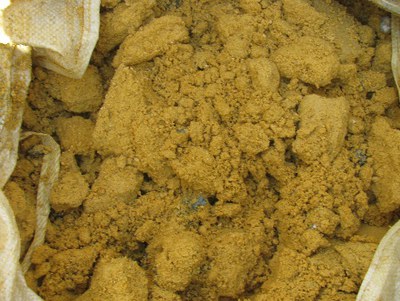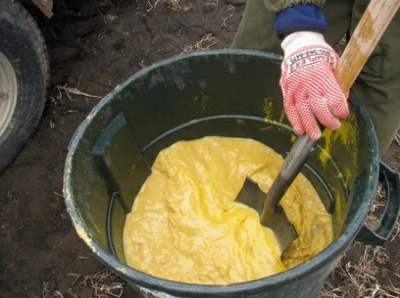Distillers Grains A Source of Phosphorus Fertilizer
We started a study in 2015 to assess the phosphorus fertilizer value of wet distiller’s grains (WDG) in the production of corn.
Distiller’s grains are nutrient-rich co-products, which include WDG's, condensed distiller’s solubles (CDS) and dry distiller’s solubles (DDS), from dry-mill ethanol production. They are used as feed ingredients for livestock diets. Besides their nutritive values, their elemental content can also be very useful as fertilizer sources.
The volume of distiller’s grains produced by ethanol plants in North Dakota (ND) often supersedes their demands by livestock owners. Thus ethanol producing plants have to deal with energy costs of drying WDGs (photo 1), which have a low shelf life for storage; or deal with the high cost of transportation to supply producers that are distant from the ethanol plant.

Photo 1.
Some ND farmers seeking ways to cut down on fertilizer input costs have been expressing interest in WDGs as a source of fertilizer. These interests prompted a study to test WDGs as a phosphorus source for corn, along with CDS (photo 2) also called syrup, and triple superphosphate (TSP) at three levels of phosphorus. All inputs were incorporated after application at 0, 40, 80, and 120 lbs P2O5/ac. The WDG analysis on wet basis (72%) contained 18 lbs/T P2O5, 24 lbs/T total N, 7.2 lbs/T S. CDS contained 103 lbs/T P2O5, 164 lbs/T total N, and 36 lbs/T S.

Photo 2.
Results:
-
Corn grain yields increased with application of distiller’s grains.
-
CDS produced the highest yields followed by WDG’s and TSP.
-
Protein data are awaited and more details will be reported in the 2015 CREC Annual Reports.
-
Study will continue next year to confirm results. Practical applications will also be tested.
Jasper Teboh
Soil Scientist


